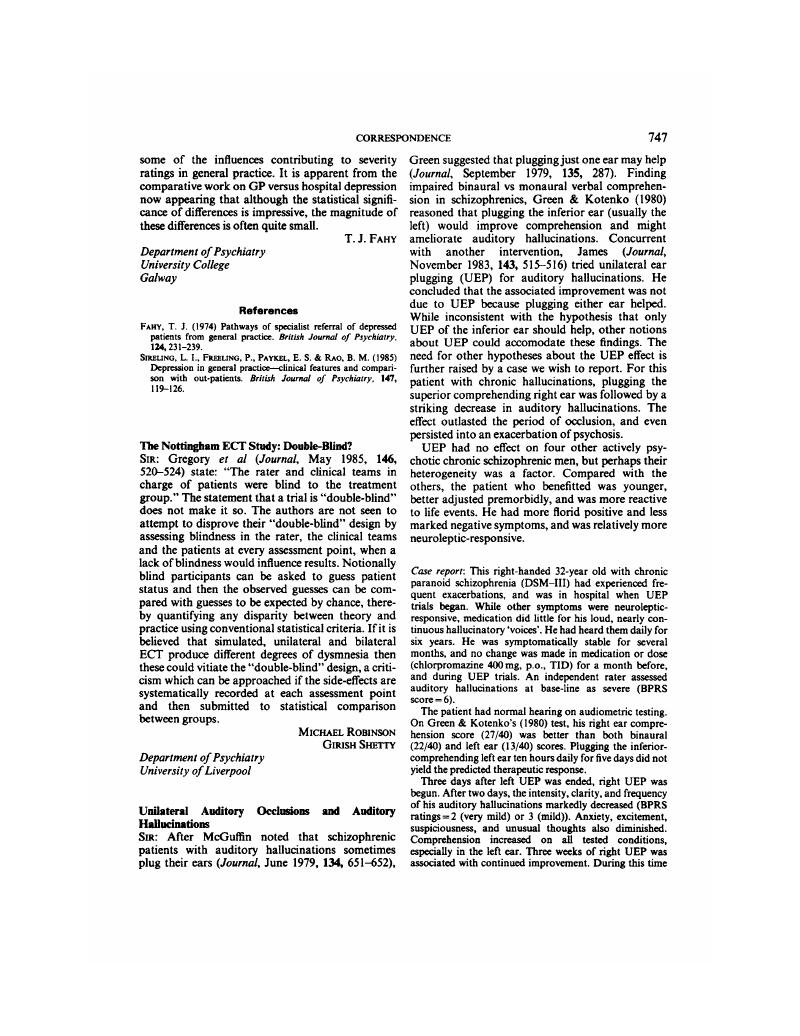Crossref Citations
This article has been cited by the following publications. This list is generated based on data provided by Crossref.
Galin, David
Rodgers, Valerie
and
Merrin, Edward L.
1990.
Story recall under monaural and binaural conditions in psychiatric patients.
Biological Psychiatry,
Vol. 28,
Issue. 9,
p.
794.
Luchins, Daniel J.
Dyson, Vida
Hanrahan, Patricia
Marks, Robert
and
Blake, Lesley
1992.
Failure of a Binaural Comprehension Deficit to Select Responders to Earplug use in Schizophrenia.
British Journal of Psychiatry,
Vol. 161,
Issue. 3,
p.
397.
Levick, Stephen E.
Wexler, Bruce E.
Lorig, Tyler
Gur, Raquel E.
Gur, Ruben C.
and
Schwartz, Gary E.
1993.
Asymmetrical Visual Deprivation: A Technique to Differentially Influence Lateral Hemispheric Function.
Perceptual and Motor Skills,
Vol. 76,
Issue. 3_suppl,
p.
1363.
Aharonovich, E
Karny, N
and
Nachson, I
1993.
Visual field processing in paranoid and non-paranoid schizophrenics.
European Psychiatry,
Vol. 8,
Issue. 6,
p.
301.
Himadi, Bill
and
Curran, James P.
1995.
The modification of auditory hallucinations.
Behavioral Interventions,
Vol. 10,
Issue. 1,
p.
33.
Levy, Lucien M.
and
Henkin, Robert I.
2000.
Physiologically Initiated and Inhibited Phantosmia: Cyclic Unirhinal, Episodic, Recurrent Phantosmia Revealed by Brain fMRI.
Journal of Computer Assisted Tomography,
Vol. 24,
Issue. 4,
p.
501.
Green, Paul
and
Josey, Frank
2002.
The Use of an Earplug to Increase Speech Comprehension in a Subgroup of Children With Learning Disabilities: An Experimental Treatment.
Applied Neuropsychology,
Vol. 9,
Issue. 1,
p.
13.




eLetters
No eLetters have been published for this article.